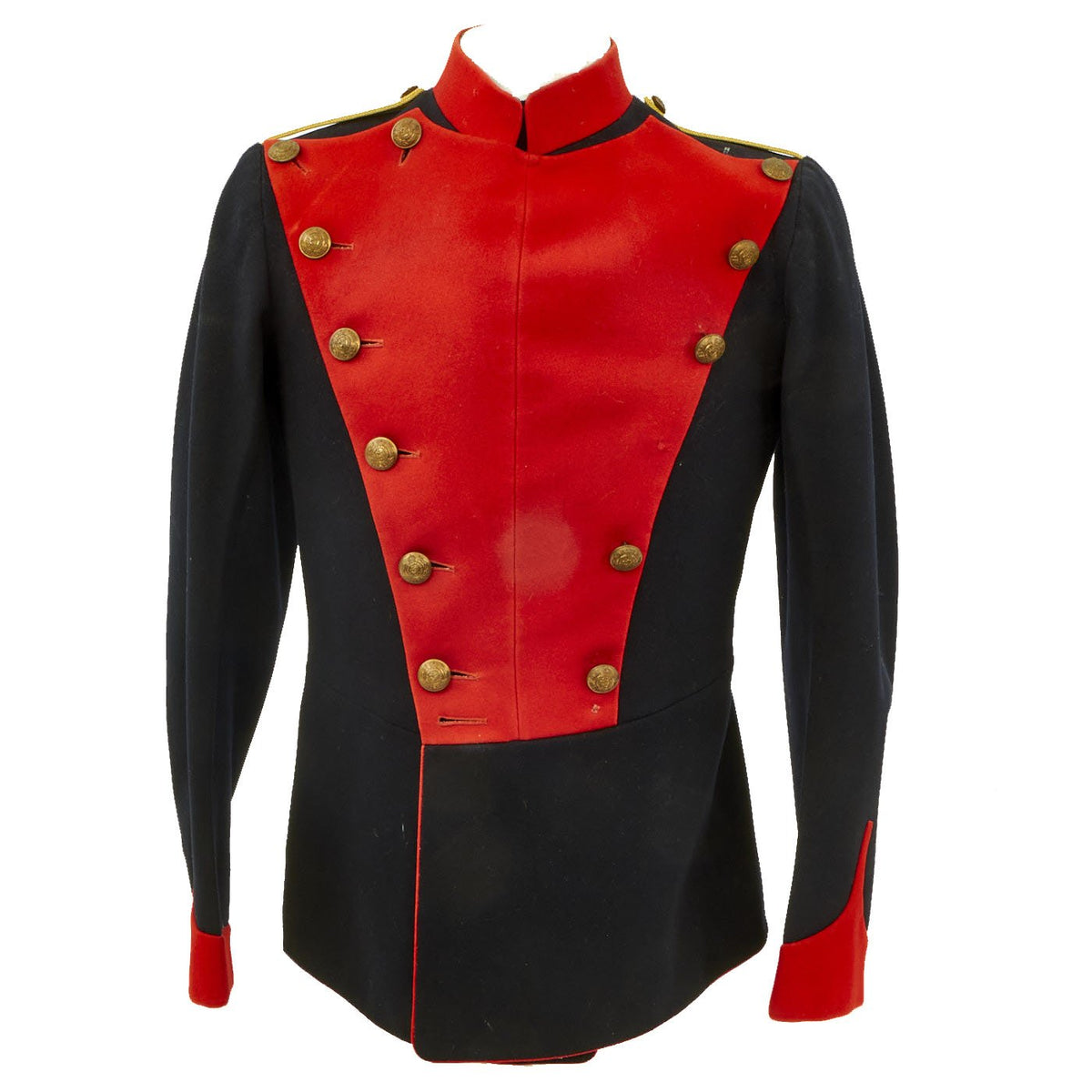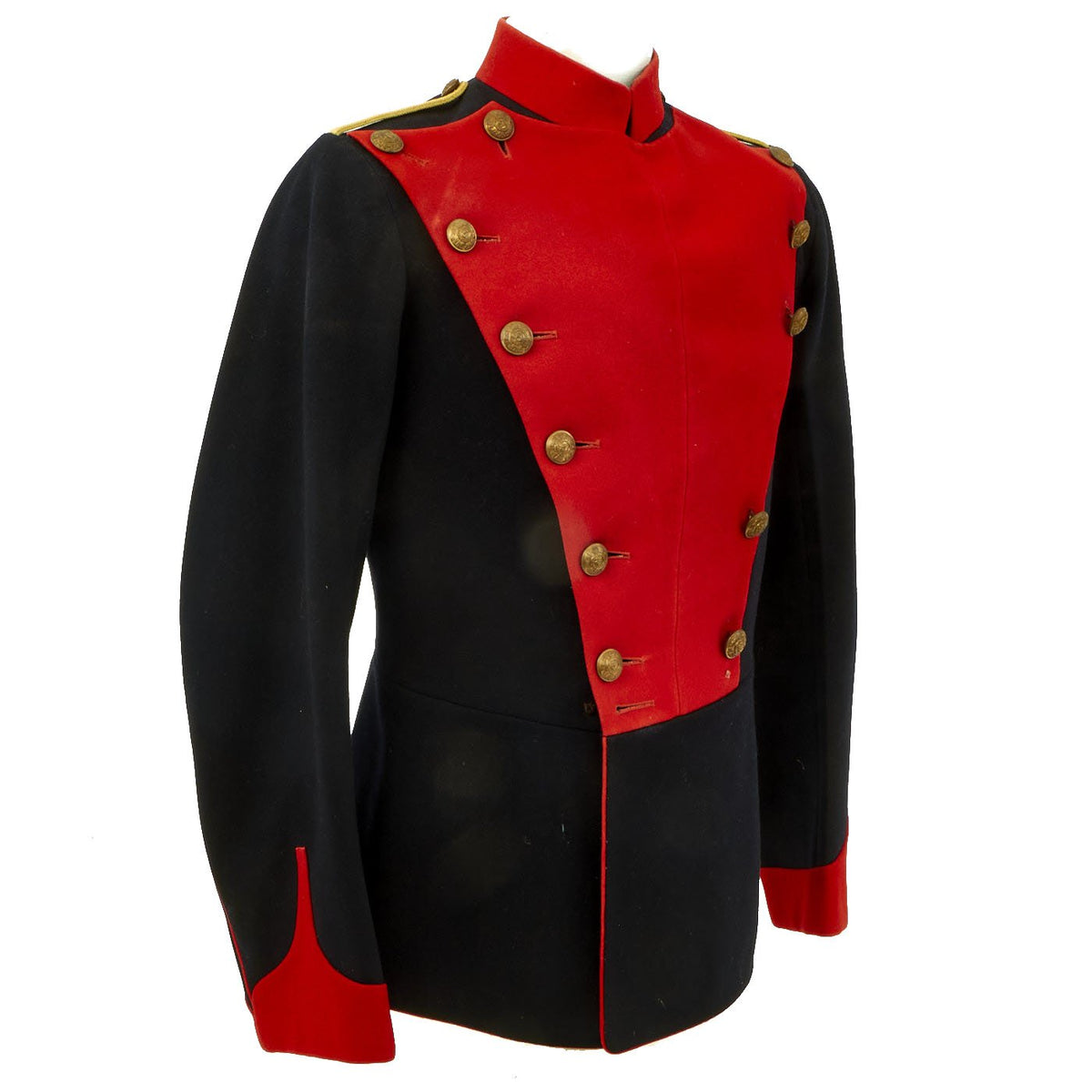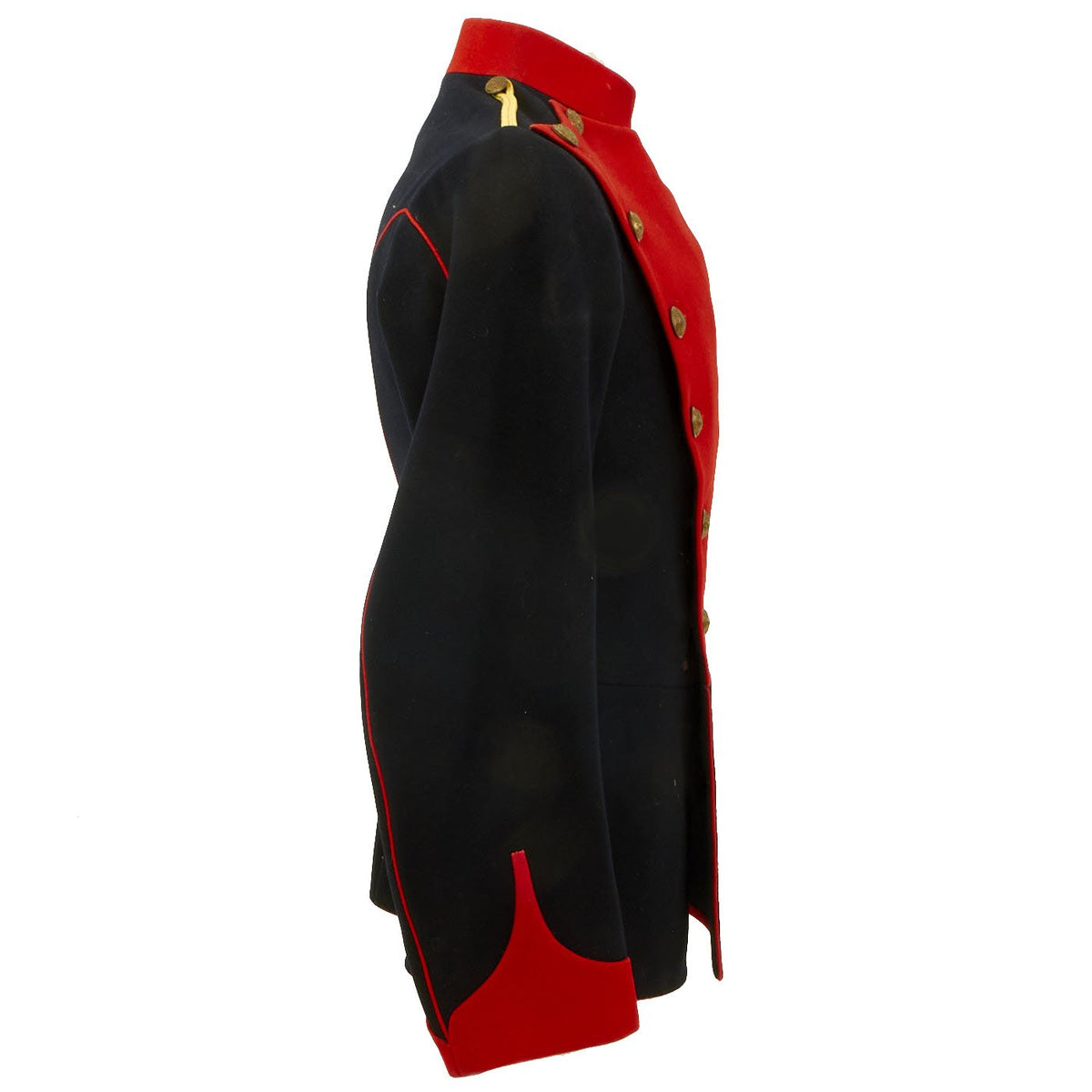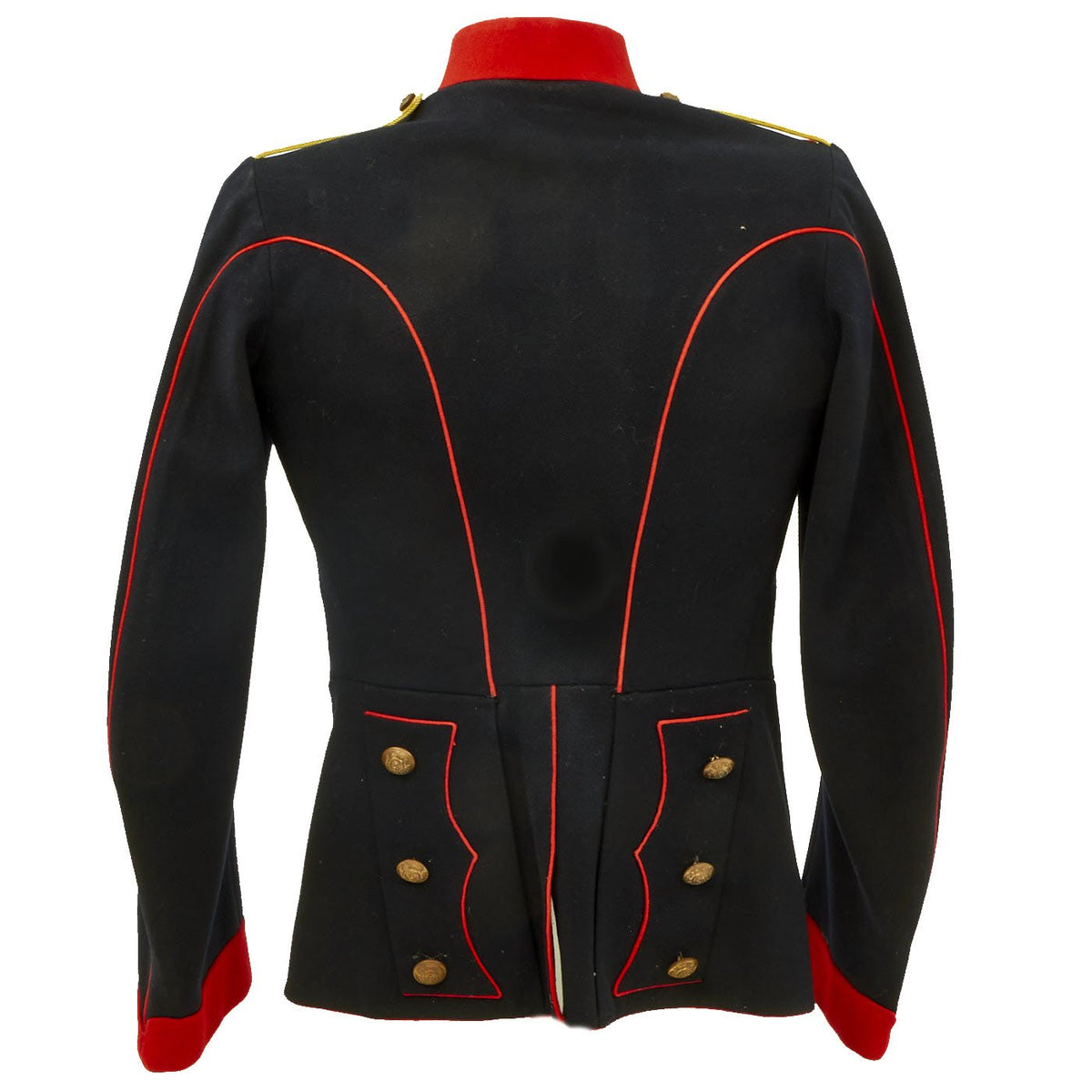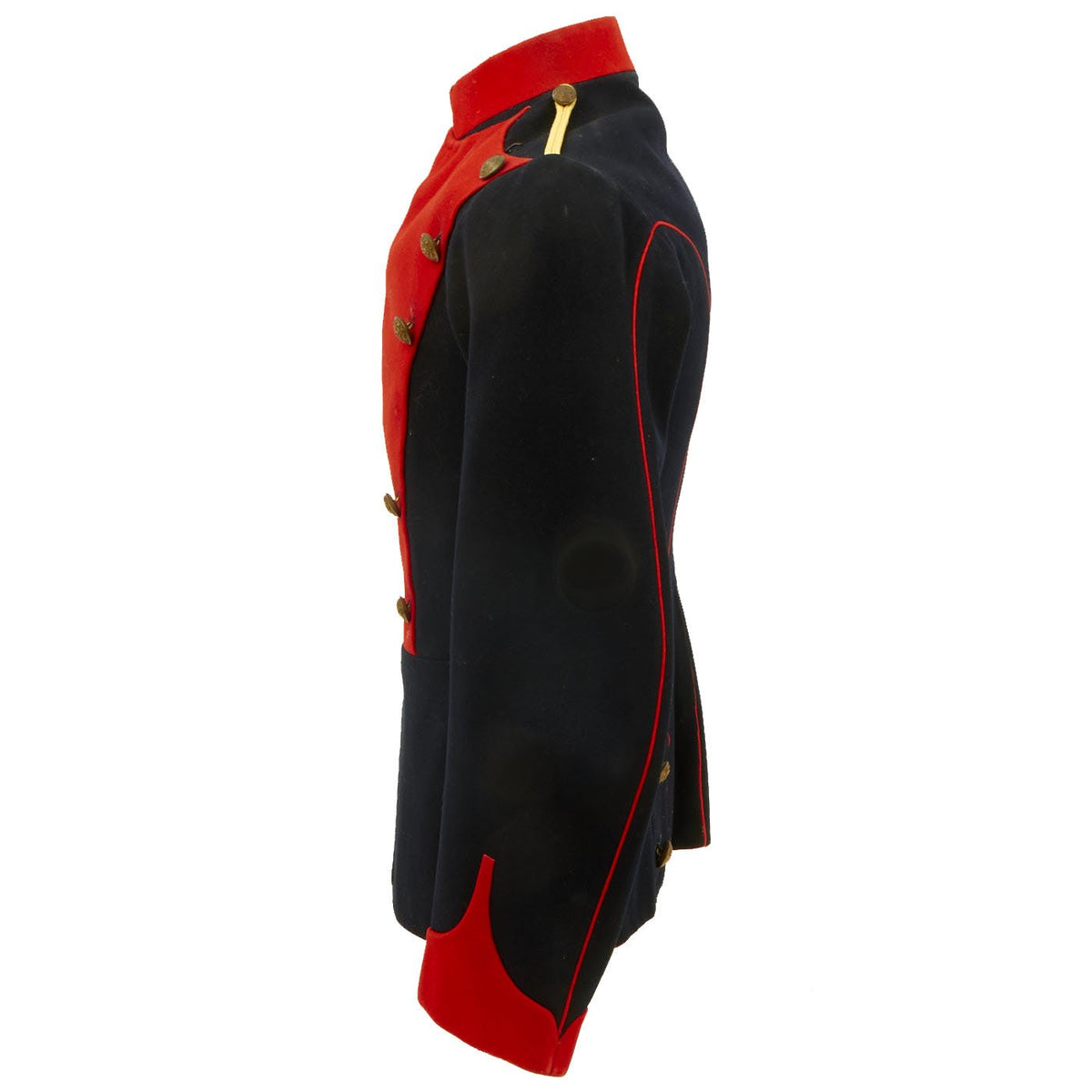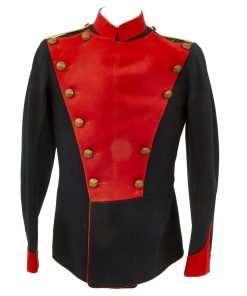Original British WWI Royal Irish Lancers Coat – Dated 1912 Original Items
$ 425,00 $ 127,50
Original Item: Only One Available. Fantastic 1912 Dated Royal Irish Lancers Uniform Coat. The Coat is in incredible condition, constructed of fine melton wool, with white kersey lining. The original December, 1912 dated maker label is still present within the skirt of the coat. All but two of the Fifth Royal Irish buttons are intact, all being marked “Smith & Wright, Ltd/Birmingham”. Original yellow corded epaulettes are intact as well.
Measurements:
Front across chest: 19.5”
Collar to Shoulder: 5”
Shoulder to Shoulder: 22.5”
Shoulder to Cuff: 25”
The 5th Royal Irish Lancers was a cavalry regiment of the British Army. It saw service for three centuries, including the First World War. It amalgamated with the 16th The Queen’s Lancers to become the 16th/5th Lancers in 1922.
The regiment was originally formed in 1689 by Brigadier James Wynne as James Wynne’s Regiment of Dragoons. It fought at the Battle of the Boyne in July 1690 and at the Battle of Aughrim later that month under King William III. Renamed the Royal Dragoons of Ireland in 1704, it went on to fight under the Duke of Marlborough at the Battle of Blenheim in August 1704 during the War of the Spanish Succession. At the Battle of Ramillies in May 1706 the regiment helped capture the entire French “Regiment du Roi”, after which it fought at the Battle of Oudenarde in July 1708 and at the Battle of Malplaquet in September 1709. In 1751, it was retitled 5th Regiment of Dragoons and in 1756 it became the 5th (or Royal Irish) Regiment of Dragoons. As such, it served in Ireland and had the honour of leading the charge against the rebels at the Battle of Enniscorthy in May 1798 during the Irish Rebellion of 1798. However, its troops were accused of treachery: their accusers claimed their ranks had been infiltrated by rebels. Following an investigation, it was found that a single individual, James M’Nassar, had infiltrated the regiment: he was ordered to be “transported beyond the seas”. According to Continental Magazine:
“The circumstance was commemorated in a curious way. It was ordered that the 5th Royal Irish Light Dragoons should be erased from the records of the army list, in which a blank between the 4th and 6th Dragoons should remain forever, as a memorial of disgrace. For upward of half a century this gap remained in the army list, as anybody may see by referring to any number of that publication of half–dozen years back.”
The regiment was reformed in 1858, keeping its old number and title, but losing precedence, being ranked after the 17th Lancers. It was immediately converted into a lancer regiment and titled 5th (or Royal Irish) Regiment of Dragoons (Lancers). In 1861, it was renamed the 5th (or Royal Irish) Lancers and then the 5th (Royal Irish) Lancers. The regiment served in India between November 1863 and December 1874 and a contingent joined the Nile Expedition in autumn 1884. It then fought against the forces of Osman Digna near Suakin in 1885 during the Mahdist War. The regiment again left for India in November 1888, serving there for ten years until they were posted to South Africa in February 1898. They were stationed at Ladysmith until October 1898, when they went to Pietermaritzburg, where they remained until the outbreak of the Second Boer War in October 1899.
As one of two cavalry regiments stationed in South Africa on the outbreak of war, the regiment consequently took part in the early fighting. They fought at the Battle of Elandslaagte on 21 October 1899, at the Battle of Rietfontein on 24 October 1899, and was part of the besieged garrison of Ladysmith during the Siege of Ladysmith November 1899 to February 1900. After the relief of that town, they were re-horsed, and formed part of General Sir Redvers Buller′s army, taking part in all his actions until his Natal army joined with the main army at Belfast. They accompanied Buller in his advance into the Lydenburg district, and then, under General John Brocklehurst, made the forced march through the Dulstroom Valley to join General Ian Hamilton. Later they formed part of General Smith-Dorrien′s flying column. In January 1901, still under General Smith-Dorrien, they covered the left of General Sir John French′s big movement down to the Swaziland border. They then served under General Sir Bindon Blood, and operated in the Carolina district until July 1901, when they travelled by rail to Cape Colony. Here they formed part of Colonel Hunter-Weston′s mobile column. The regiment thus stayed in South Africa throughout the hostilities, which ended with the Peace of Vereeniging on 31 May 1902. Following the end of the war, 340 officers and men of the regiment left South Africa on the SS City of Vienna, which arrived at Southampton in October 1902.
The regiment, as part of the 3rd Cavalry Brigade, was also involved in the Curragh incident in March 1914.
The regiment then returned to England, where it stayed until the outbreak of World War I, when it became part of the British Expeditionary Force, sailing from Dublin to France as part of the 3rd Cavalry Brigade in the 2nd Cavalry Division in August 1914 for service on the Western Front. It saw action during the Battle of Mons in August 1914. During the Battle of Cambrai in November 1917 George William Burdett Clare received the Victoria Cross posthumously. The 5th (Royal Irish) Lancers also has the grim honour of being the regiment of the last British soldier to die in the Great War. This was Private George Edwin Ellison from Leeds, who was killed by a sniper as the regiment advanced into Mons a short time before the armistice came into effect.
The regiment was renamed 5th Royal Irish Lancers and disbanded in 1921, but a squadron was reconstituted in 1922 and immediately amalgamated with the 16th The Queen’s Lancers to become the 16th/5th Lancers.
Fast Shipping with Professional Packaging
Thanks to our longstanding association with UPS FedEx DHL, and other major international carriers, we are able to provide a range of shipping options. Our warehouse staff is expertly trained and will wrap your products according to our exact and precise specifications. Prior to shipping, your goods will be thoroughly examined and securely secured. We ship to thousands clients each day across multiple countries. This shows how we're dedicated to be the largest retailer on the internet. Warehouses and distribution centres can be located throughout Europe as well as the USA.
Note: Orders with more than one item will be assigned a processing date depending on the item.
Before shipping before shipping, we'll conduct a thorough inspection of the items you have ordered. Today, the majority of orders will be delivered within 48 hours. The delivery time will be between 3-7 days.
Returns
The stock is dynamic and we cannot completely manage it because multiple stakeholders are involved, including our factory and warehouse. So the actual stock may alter at any time. It's possible that you may not receive your order once the order has been made.
Our policy is valid for a period of 30 days. If you don't receive the product within 30 days, we are not able to issue a refund or an exchange.
You can only return an item if it is unused and in the same state as the day you received it. You must have the item in its original packaging.
Related products
Uncategorized
Uncategorized
Uncategorized
Uncategorized
Uncategorized
Uncategorized
Uncategorized
Uncategorized
Angolan Rebel 1970s era 60mm Inert Display Mortar from Angolan Civil War Original Items
Uncategorized
Uncategorized
Uncategorized
Uncategorized
Uncategorized
Uncategorized
Uncategorized
Uncategorized
